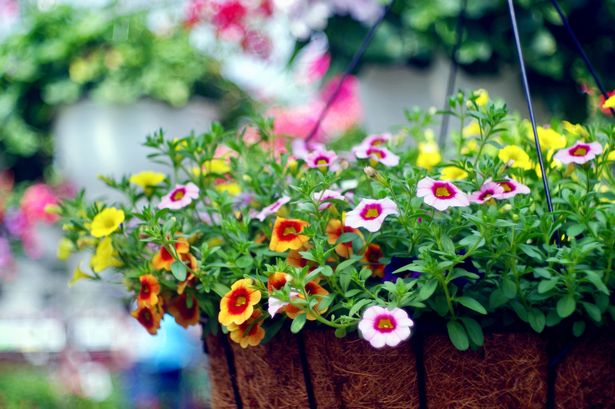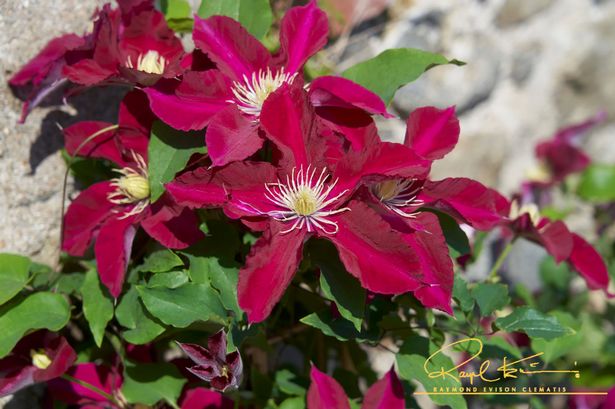If a grass-loving pest is leaving your back garden looking bare and patchy and other methods have failed you, try one DIY step to remove them for good If leatherjackets have infested your garden, their might not be enough grass left to mow (Image: Getty Images)
If leatherjackets have infested your garden, their might not be enough grass left to mow (Image: Getty Images)
The sun has been shining and in glorious weather we all want to tend to our lawns. Lawns are one of the magic ingredients that make gardeners proud. They do need some care and attention in return but they reward you for that. But a letter from a reader, Aisling, is a reminder that our lawns can need more than just water and reseeding to keep looking lush and healthy.
She wrote to me, “We had a new lawn laid for us last year and a year later it is near gone as leatherjackets have it destroyed. We have use nematodes which are expensive so many times and are not working. What should we do? Our neighbour seems to have the same issue.”
Leatherjackets are the larvae of craneflies and they damage lawns by eating the roots. Unfortunately they like fresh healthy grass so newly laid turf is susceptible. Nematodes are the recommended biological method for treating them and the soil needs to be moist and warm when you do this. My advice to her – and anyone else experiencing this issue – is to keep trying – apply now and again in late August to early October.
You can also try placing black plastic sheeting or sacks on the lawn overnight. Leatherjackets will surface underneath, and you can dispose of them in the morning. Encourage birds to your garden who are their natural predators. If the lawn is really bad, you will need to scarify, aerate and reseed.
 Leatherjackets are the larvae of craneflies and they damage lawns by eating the roots(Image: Getty Images/iStockphoto)READ MORE: Garden expert’s warning to anyone using ‘traditional’ way of removing weedsJobs for the weekUnless frost is forecast, your pots and hanging baskets can go outside permanently if you have been gradually acclimatising them in the last few weeks. If not, start to leave them outside during the day so they can adjust gradually.If you’re further south, you can plant tender plants such as cannas and dahlias outside and sow tender annuals outdoors. It’s summer bedding time so if you fancy some colour, plant some pelargoniums, begonias, lobelias and antirrhinums into your pots and beds. If you’re nervous about frost, keep some horticultural fleece handy for warmth at night.In the veg garden, you can sow seeds directly outdoors that had to be done indoors until now such as pumpkins, courgettes, squash, French beans and sweetcorn. If you haven’t planted potatoes yet, get them in this month. Earth up potato plants – draw soil up to stem to create ridges of soil.Aphids will be visible – keep an eye out for them and remove by hand.Keep successional sowing of quick to crops veg such as salad, beetroot and radish.
Leatherjackets are the larvae of craneflies and they damage lawns by eating the roots(Image: Getty Images/iStockphoto)READ MORE: Garden expert’s warning to anyone using ‘traditional’ way of removing weedsJobs for the weekUnless frost is forecast, your pots and hanging baskets can go outside permanently if you have been gradually acclimatising them in the last few weeks. If not, start to leave them outside during the day so they can adjust gradually.If you’re further south, you can plant tender plants such as cannas and dahlias outside and sow tender annuals outdoors. It’s summer bedding time so if you fancy some colour, plant some pelargoniums, begonias, lobelias and antirrhinums into your pots and beds. If you’re nervous about frost, keep some horticultural fleece handy for warmth at night.In the veg garden, you can sow seeds directly outdoors that had to be done indoors until now such as pumpkins, courgettes, squash, French beans and sweetcorn. If you haven’t planted potatoes yet, get them in this month. Earth up potato plants – draw soil up to stem to create ridges of soil.Aphids will be visible – keep an eye out for them and remove by hand.Keep successional sowing of quick to crops veg such as salad, beetroot and radish. Unless frost is forecast, your pots and hanging baskets can go outside permanently if you have been gradually acclimatising them in the last few weeks(Image: Getty Images)Lightly hoe borders to remove weed seedlings which will dry out on the soil surface.Open vents and doors in glasshouses on warm days to improve air circulation.Overcrowded spring bulbs can be lifted and divided once they start to die down.Hang pheromone traps in apple trees to reduce codling moth damage to your fruit.The Chelsea Flower Show
Unless frost is forecast, your pots and hanging baskets can go outside permanently if you have been gradually acclimatising them in the last few weeks(Image: Getty Images)Lightly hoe borders to remove weed seedlings which will dry out on the soil surface.Open vents and doors in glasshouses on warm days to improve air circulation.Overcrowded spring bulbs can be lifted and divided once they start to die down.Hang pheromone traps in apple trees to reduce codling moth damage to your fruit.The Chelsea Flower Show
Later this month the world-renowned Chelsea Flower Show will burst into bloom once more. This prestigious horticultural event has enchanted gardeners and plant lovers since 1913, pausing only during the two World Wars and the Covid pandemic in 2020. Held in the grounds of the Royal Hospital Chelsea, it draws tens of thousands of visitors from the UK and abroad, all eager to marvel at the cutting-edge garden designs on Main Avenue and admire the dazzling array of plants in the Grand Pavilion.
One of the most anticipated highlights of the show is the annual Plant of the Year award. This coveted title is given to the most outstanding new plant introduction, judged on criteria such as originality, garden performance, and potential popularity among UK gardeners. Many past winners have gone on to become household favourites—take Geranium ‘Rozanne’, for example, with its profusion of vivid blue blooms now a common sight in gardens.
This year’s competition features a variety of unusual and interesting contenders. Among them is Philadelphus ‘Petite Perfume Pink’, the first truly pink-flowered mock orange. Developed by legendary plant breeder Alan Postill, this compact shrub produces rich pink buds that open into highly fragrant flowers. With no pruning required, it’s a perfect choice for gardens of all sizes. Postill’s name may already be familiar to you – he also introduced the ever-popular Daphne bholua ‘Jacqueline Postill’, named after his wife.
Another standout is Clematis ‘Elpis’, a striking new variety from renowned clematis breeder Raymond Evison. With deep ruby-red blooms set against lush green foliage, this climber flowers from May to July and again in early autumn. Named after the Greek goddess of hope, ‘Elpis’ supports male cancer research and brings both beauty and meaning to the garden.
 Clematis ‘Elpis’, a striking new variety from renowned clematis breeder Raymond Evison is a standout for the ‘plant of the year’ award at the Chelsea Flower Show(Image: INTERNET)
Clematis ‘Elpis’, a striking new variety from renowned clematis breeder Raymond Evison is a standout for the ‘plant of the year’ award at the Chelsea Flower Show(Image: INTERNET)
Meanwhile, fuchsia ‘Mambo’ is part of the Patio Dancer series bred by Tim Kerley of Cambridge-based Kerley & Co. With its elegant, layered pink-and-white flowers, this compact variety is perfect for containers and hanging baskets. Salvias, always a garden favourite, are well represented this year. ‘Tropicolor Sunrise’ offers fiery red petals and copper-toned sepals, with copper undersided leaves for extra interest.
Hailing from Argentina, it promises a bold, tropical look. In contrast, Salvia ‘Peach Melba’ presents a softer palette with large, two-toned peach and pink flowers. Its compact, bushy habit and six-month flowering period make it an excellent choice for smaller spaces. Last year’s winner, Prunus ‘Starlight’, impressed with its delicate, star-shaped white blossoms.
Its breeder, Ken Tobutt, returns this year with Prunus ‘Crystal Falls’, a graceful, winter-flowering weeping cherry. With double white blooms from mid-December, its arching branches suit small gardens and even container growing — an ideal choice for adding charm in the colder months. Ken Tobutt is well known as the creator of many new shrubs and trees, including the Ballerina Series of apple varieties.
Such a diverse and impressive selection of new plants on display reflects the creativity of some of the world’s most skilled breeders. Whether you’re an avid collector or a casual gardener, Chelsea remains an essential showcase for the future stars of our gardens.
Plant of the week – Aquilegia caerulea Known as the columbine flower, this hardy perennial is suitable for positions in sun or semi shade (Image: Getty Images)
Known as the columbine flower, this hardy perennial is suitable for positions in sun or semi shade (Image: Getty Images)
Often known as columbines or granny’s bonnets, aquilegias have delicate foliage and intricate flowers. This hardy perennial is suitable for positions in sun or semi shade and works well in cottage gardens, rock gardens and containers. There are lots of varieties but this one is a stand-out beauty with its larger than usual flowers in a beautiful combination of pale blue and white.
DASH Water
This article contains affiliate links, we will receive a commission on any sales we generate from it. Learn more
£48
£24
DASH Water
Get Deal
Shoppers can enjoy 50% off with code SAVEM50.

